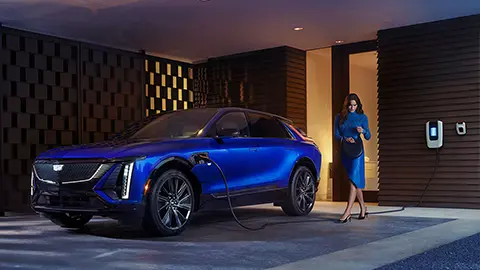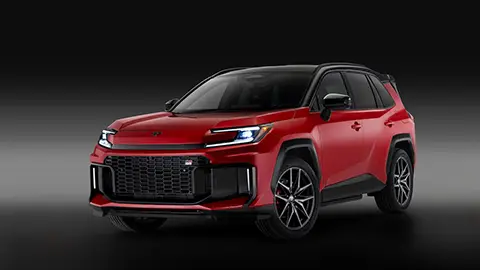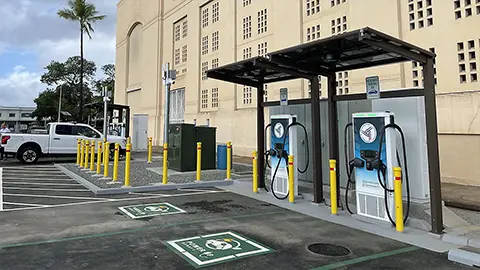Electric Vehicle (EV) owners have long known that EVs are often more reliable than conventional gas-powered vehicles.
Afterall, EVs have fewer moving parts and therefore have fewer potential failure points and require less maintenance. The internal combustion engine (ICE) in a gas-powered vehicle itself has about 100-200 moving parts. Together with the drivetrain, it can be upwards to about 2,000 moving parts. In contrast, an electric motor in a battery-electric vehicle only has about 1-3 moving parts and only 20-30 with the electric drivetrain.
That’s the theory. EV owners and advocates have been supporting this for years based on their own experiences but with little research and data to back it up. However, the Allgemeiner Deutscher Automobil-Club (ADAC), German’s AAA or CAA equivalent, recently found that EVs do in fact break down less than ICE vehicles.
Breakdown Rate Decreasing
ADAC’s findings are based on its database of 3.6 million breakdowns that its “Yellow Angels” roadside assistance team attended to in 2024 and previous years. It’s also based on vehicles made in the last five years.
The good news is that for all types of vehicles ADAC’s survey noticed a decrease in the breakdown rate. But when you compare EVs with ICE vehicles, it becomes apparent that EVs break down less often. In 2024, the number of EV breakdowns were 3.8 per 1,000 vehicles, compared to ICE vehicles at 9.4 per 1,000 vehicles. EV breakdowns in 2021 and 2020 were 4.2 and 8.5 per 1,000 vehicles, respectively. ICE vehicle breakdowns were 8.2 and 12.9 per 1,000 vehicles, respectively.
12V Batteries and Tires
Interestingly, the most frequent breakdowns are common items among both EV and ICE vehicles. About 45% of all breakdowns for all vehicles were due to a failure in the 12V battery. In EVs, 12V battery failures accounted for 50.5% of breakdowns – slightly higher than the 45% observed in ICE vehicles.
Both EVs and ICE vehicles use a 12V low-voltage battery to power onboard computers, power windows, infotainment systems, climate control, and other systems. In EVs, the 12V is also used to “wake up” the main traction battery and support the battery management system (BMS). 12V batteries in both EVs and ICE vehicles are often lead acid batteries that have a typical lifespan of three to four years.
Tires were also a common cause of all vehicle breakdowns. ADAC received more roadside assistance calls for tires on EVs than ICE vehicles, with about 1.3 calls per 1,000 EVs and 0.9 calls per 1,000 ICE vehicles. This makes sense since EVs can be heavier than their ICE counterparts due to the weight of the traction battery pack. The added weight creates more friction and wear on tires. EVs also have more instant torque and power than ICE vehicles, which can be harder on tires, especially when accelerating hard from a standstill.
EV vs. ICE Breakdowns
For EVs, ADAC found that 81% of the EV breakdowns were largely due to the 12V battery (50%), the electric motor and motor management high-voltage systems (18%), and tires (13%).
For ICE vehicle breakdowns, 78% of breakdowns were due to the 12V battery (45%), generator/starter/electrical system/lighting (23%), and the motor and motor management (10%).
EV Model Breakdowns
The Hyundai Ioniq 5 was observed to have the highest breakdown rate among modern EVs. It also differed by model year. ADAC received more calls for 2022 model year Ioniq 5’s at 22.4 calls per 1,000 cars than 2021 model year vehicles at 18.3 calls per 1,000 vehicles. The Ioniq 5’s technology and drivetrain is shared with the Hyundai Ioniq 6, Kia EV6 and Genesis GV60. All of which have had challenges with their Integrated Charging Control Unit (ICCU), which also can prevent the 12V from being charged and leading to more breakdowns.
By comparison, Tesla’s Model Y only received 0.9 calls per 1,000 cars built in 2022, and the brand’s Model 3 received only 0.5 calls per 1,000 vehicles. Breakdowns for the VW ID.4 were also low at 1 call per 1,000 vehicles.
It appears that auto manufacturers are improving their EV technology. ADAC noticed that they’ve had fewer calls for later model year EVs.
Preventing Breakdowns in Your EV
At the end of the day, an EV is still a car. Just like ICE vehicles, EVs require regular scheduled maintenance and routine checks. It’s generally best practice to follow the manufacturer’s scheduled maintenance.
During the regular scheduled maintenance, the 12V low voltage battery and other critical systems, like inverters, converters, control units, and other high-voltage components can be checked and updated, often under warranty.
Don’t neglect your tires in an EV. Have them inspected and rotated on a regular basis for premature and uneven wear. If you’re replacing them, it’s often best to stick to the same brand and type of tire that your EV came with from the factory. You can also help extend the life of your tires by accelerating and braking more gradually as well as ensuring that the tire pressures are at the correct level.
Keep an eye on recalls and service campaigns from the manufacturer. Many of those are for critical systems that can prevent future breakdowns and reliability issues.
Breakdown vs. Reliability
It’s important to note that a “breakdown” is different from “reliability.”
A breakdown refers to some type of failure that causes the vehicle to be inoperable. Consequently, this requires roadside assistance and repairs.
Reliability is more about how a vehicle operates over its lifespan without breakdowns, major and minor issues, and frequency of repairs.
For example, a vehicle can have an occasional breakdown, like a battery or engine failure, but still be reliable over the course of the vehicle’s life. If the cause of the breakdown becomes more frequent and/or part of a larger issue with the vehicle, it can become a larger reliability issue.
Final Thoughts
ADAC’s findings are insightful and can lead to an indication of longer-term EV reliability, especially compared to ICE vehicles. Breakdowns can also be prevented through routine maintenance and ensuring that warranty work and service campaigns are up to date for your EV. This will help ensure a more pleasant ownership experience that you already have with your EV.
Explore More About EV Ownership & Maintenance
⚡ Preventing Battery Degradation
Get expert tips on extending the lifespan of your electric vehicle’s battery pack.
Read More ➜
🛠️ Understanding EV Maintenance
Learn exactly what maintenance your electric car needs—and what it doesn’t.
Read More ➜
🚘 Find the Perfect EV for Your Lifestyle
Our interactive EV Matchmaker helps you quickly pinpoint your ideal electric car or SUV.
Read More ➜















